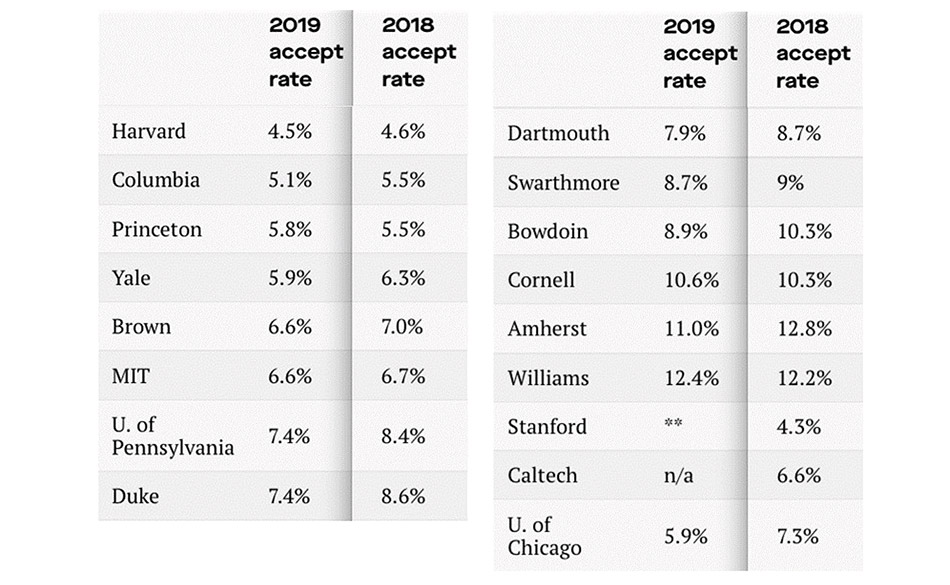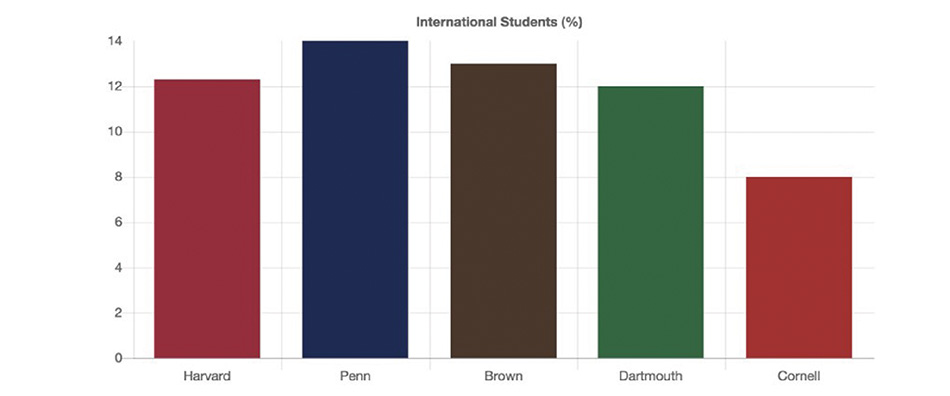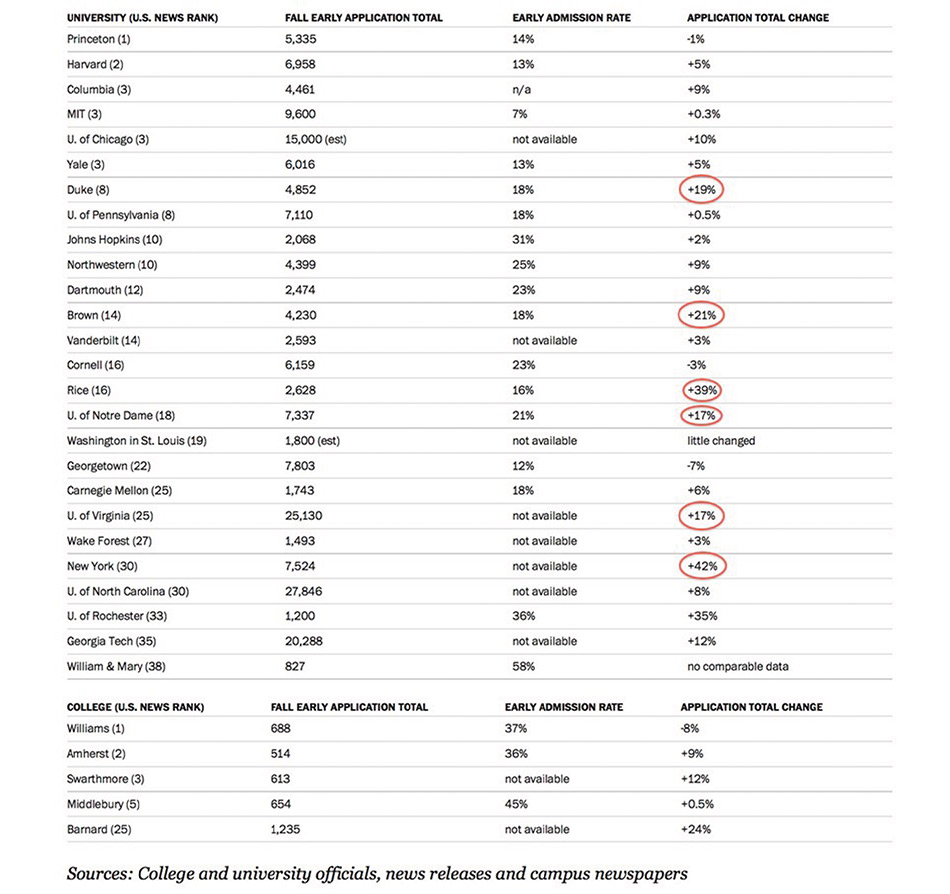As has been the general trend for several years now, the college admittance rates continue to fall and for the candidates for the Class of 2023,
this year was no exception. This is true for all top-tier universities and not just for the Ivy League schools.
The chart below compared the number of applicants and the accept rates between 2018
and 2019 among 16 highest ranked universities in the US, including all the Ivies:

The admission rates have decreased from 2018 to 2019 with the exception of Princeton, Cornell and Williams.
(Stanford no longer provides data for 2019).
With increased competitiveness, excellent grades, top-notched standard tests scores or even stellar extra-curriculum activities are no guarantees
for spots at these universities. The process has become more random and students are urged to be more cautious and conservative in making
up their list of universities to apply. Moderately ranked universities were more difficult to get in such as most public universities i.e.
University of Michigan, one of the top 25 universities. Acceptances have dropped from 50% in 2009-2010 to 29% in 2015-2016 and to 23.5%
in 2017-2018 (we don’t have the figure for 2018-2019 cycle).
As for international students, the admission is even more competitive with the highest-ranked universities’ acceptance rates for foreign students less
than half of those of their US counterparts. For example, MIT’s acceptance rate for US students was 8.4%
vs. 2.9% for non-US students while the average rate was 7.2% in 2017-2018. This is due to the substantial increase in foreign student applications
as well as the fact that financial aid is restricted to only US citizens.
It is therefore not suprising to see that with lower admission rates for International students ,
at all Ivy Leagues colleges, the percentage of international students representation
is less than 15%, ; University of Pennsylvania at 14% and Cornell at 8%. (Other Ivy League colleges do not disclose the percentages).

For those students focused on getting accepted at US colleges, we often suggest that academically-strong students who are well prepared i.e.
taken all the standard tests and finished common applications by fall, apply early instead of waiting for the general regular application deadline
(or regular decision, RD) on December 31. There are two main types of early admissions: Early Action (EA) or Early Decision (ED). The major difference
between the two is that for EA, you are not committed to immediately enroll if accepted until you hear from other universities in the spring as opposed to
ED where you are committed to attend if you are accepted. The deadline for both EAs and EDs are usually November 1 so students must have completed
their common application (including the common and supplemental essays) by that date. Decisions from EAs and EDs are out no later than December
15 which could give some lucky students the chance not to submit the rest of the applications by the regular deadline if he/she is accepted ED at a particular institution.
More students are in fact applying early and the statistics from colleges do confirm this trend (see chart below). There is a 19% increase in ED application
at Duke (doubled the rate from 8 years ago); 21% at Brown and 24% at Barnard (woman’s college associated with Columbia University); 35% increase at
Rice University and finally a shocking 41% increase at NYU.
NYU is an interesting case as its popularity among Thai students has increased tremendously in the past decade.
As mentioned in the previous paragraph, over 14,000 students picked NYU as their first choice by applying early decision.
While the NYU’s ED1 was up 41%, ED2 was also up 17%. As for regular decision, a total of almost 85,000 applicants applied for first-year admission or a
12% increase compared to previous year (and 14% increase among international students, led by China, India and South Korea).
Similarly for EA applications, there is a 5% increase at Harvard; 5% increase at Yale; 17% increase at Notre Dame and finally 17% increase at University of Virginia.
Among the Ivy League colleges, the acceptance rates have now dipped to single digits with Cornell being the
last exception with 10.6% acceptdmit rate for the class of 2023. We suspect that it will not be long before Cornell’s admission rates eventually fall below 10%.

In summary, college admission for US Universities will continue to be very competitive. Nevertheless , Thai students are achieving impressive results
by gaining places at the top US universities. In fact, more Thais are now enrolled in the undergraduate programs at these Ivy Plus institutions compared to the numbers
from a decade ago. Despite the odds, students should remain focused, dedicated and hopeful because as long as their goal is realistic,
it will be within their reach.



